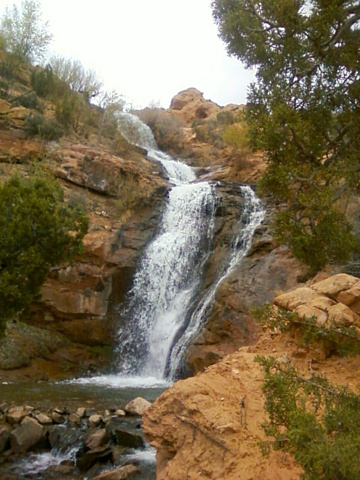The Grand County Council voted to send a letter of support for the Grand Water and Sewer Service Agency’s (GWSSA) request to the Bureau of Land Management (BLM) discuss changing the diversion of water from Mill Creek to Ken’s Lake at their Tuesday, June 18 council meeting.
Ken’s Lake, which is used for irrigation water by Spanish Valley farmers, is at 30 percent of normal volume for the year. GWSSA has proposed modifying an agreement with the BLM to increase water flow at the Shelley diversion from Mill Creek into Ken’s Lake. Currently, GWSSA is required to maintain a 3 cubic feet per second flow in the stream.
The letter stated that the council supports the agency’s proposal to allow for additional water flow into Ken’s Lake during the winter. The letter also stated that the acquisition of additional water in the winter “should have minimal impact on the Glen Canyon aquifer recharge or impact stream temperature.”
The council voted 6-1 to send the letter of support, with councilwoman Elizabeth Tubbs opposed.
“The agreement to keep 3 cfs is based on water temperature in Mill Creek,” said councilman Lynn Jackson. “It seems reasonable during times of drought to look at the situation, conserve water and look at things like this agreement.”
Due to Ken’s Lake low water conditions, the 165 irrigation users have had their allotments cut to 40 percent of normal.
Bill Love, a resident in Spanish Valley, opposed the proposal and cited a 1990 United States Geological Survey that stated that Mill Creek’s sandstone streambed below the Sheley diversion recharges the Glen Canyon Aquifer by 675-cubic feet of water each year.
Love said that amount of water would supply water for up to 1000 homes in a year.
“This is a major recharge of our culinary water,” Love said. “It is more important for the water to go to the aquifer than to the golf course, or people growing hay.”
Rebecca Andrus, the City of Moab’s engineer who has been studying the aquifer, said that it is unknown how a reduction in the streamflow would impact the aquifer.
She said that the BLM is now bringing together a committee to analyze the situation and would have their first meeting Tuesday, June 25.
“The consensus is to gain more information,” she said. “There is time for a technical committee to address it.”
Former county councilman Chris Baird attended the meeting in his new role as director of the Canyonlands Watershed Council.
He said that while agricultural businesses need to be supported, the riparian health of Mill Creek and recharging the aquifer take precedence. He encouraged low water practices such as laser leveling of fields.
Dave Erley, Mayor of Castle Valley, said that the county was putting the cart before the horse if a decision were made now and that he didn’t think the council should send a “backdoor letter” to the BLM to increase the waterflow.
“I think the technical committee should look at it and get more information,” Erley said. “As a public official I want to go on record opposing this.”
Mark Sovine, the director of the GWSSA, said he is not requesting the council to approve or negotiate anything.
“We’ve only asked for the support of the council as representative of the entire cross-section of the community,” he said. “The idea is ‘can we talk about it?’ There are no answers.”
Jackson referred to Erley’s comment that this was a “back door letter”.
“I don’t agree with the comment that this is a ‘backdoor letter’. I fail to see how a discussion of the letter and vote in the open forum of a county council meeting could be considered ‘backdoor’,” Jackson said. “We want to be part of the discussions.”
Councilman Jim Nyland made a motion to approve the letter. Jackson seconded it. During discussion Tubbs stated that while she supports the intent for research to determine whether the GWSSA could divert more water without harm to the aquifer, she said that she did not support the wording within the letter itself.
“I’m concerned that the letter does not support the process, but supports the request of GWSSA to increase water,” she said.
It seems reasonable during times of drought to look at the situation, conserve water and look at things like this agreement.”




